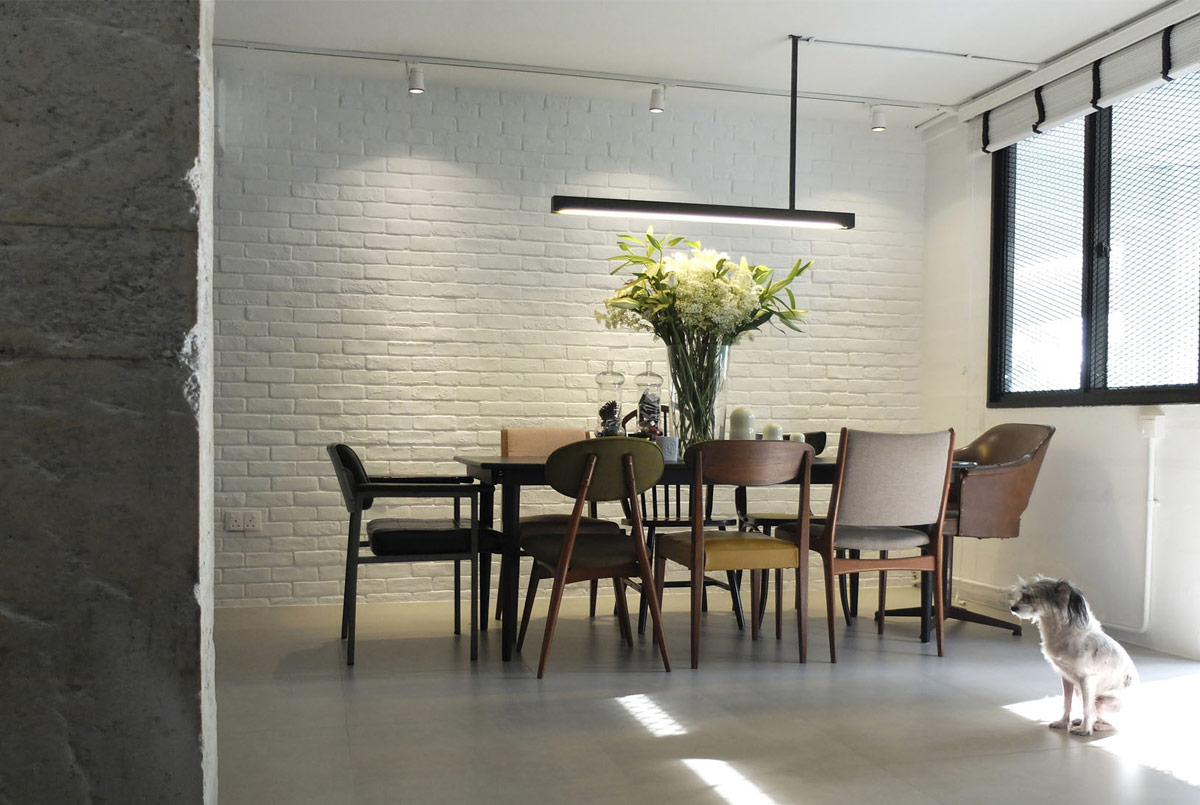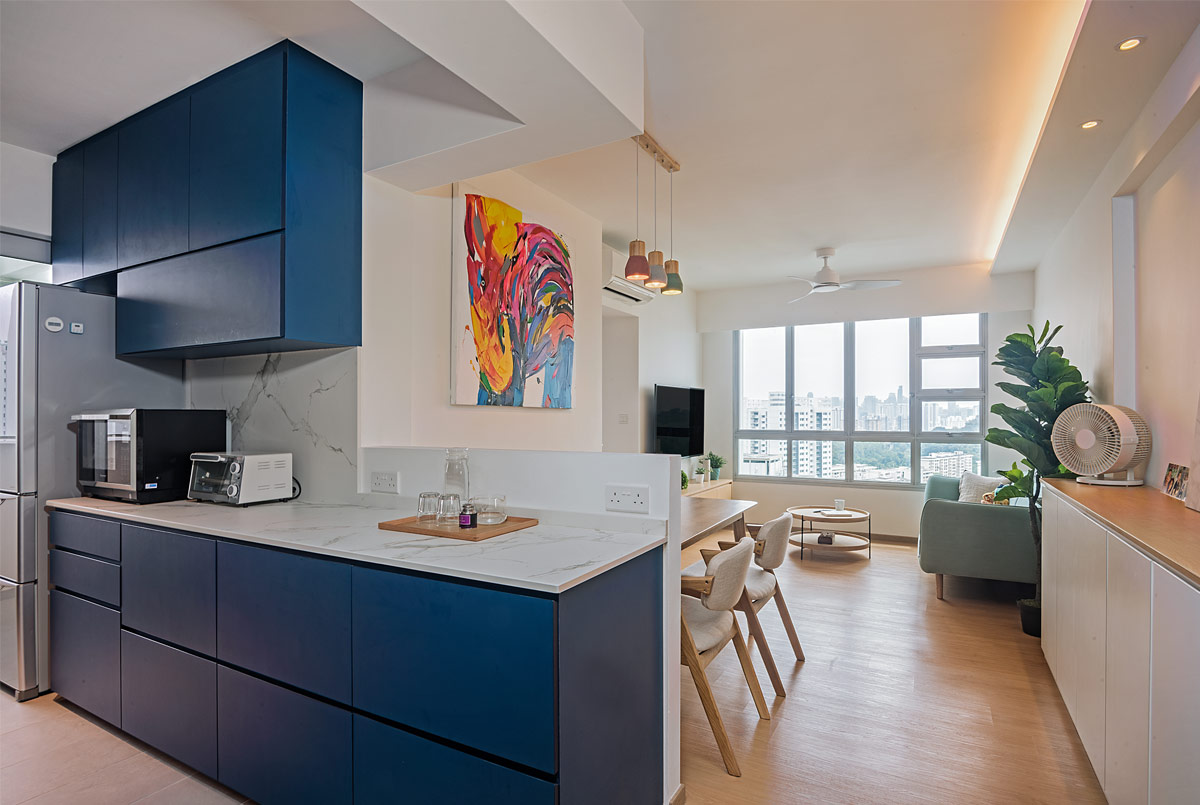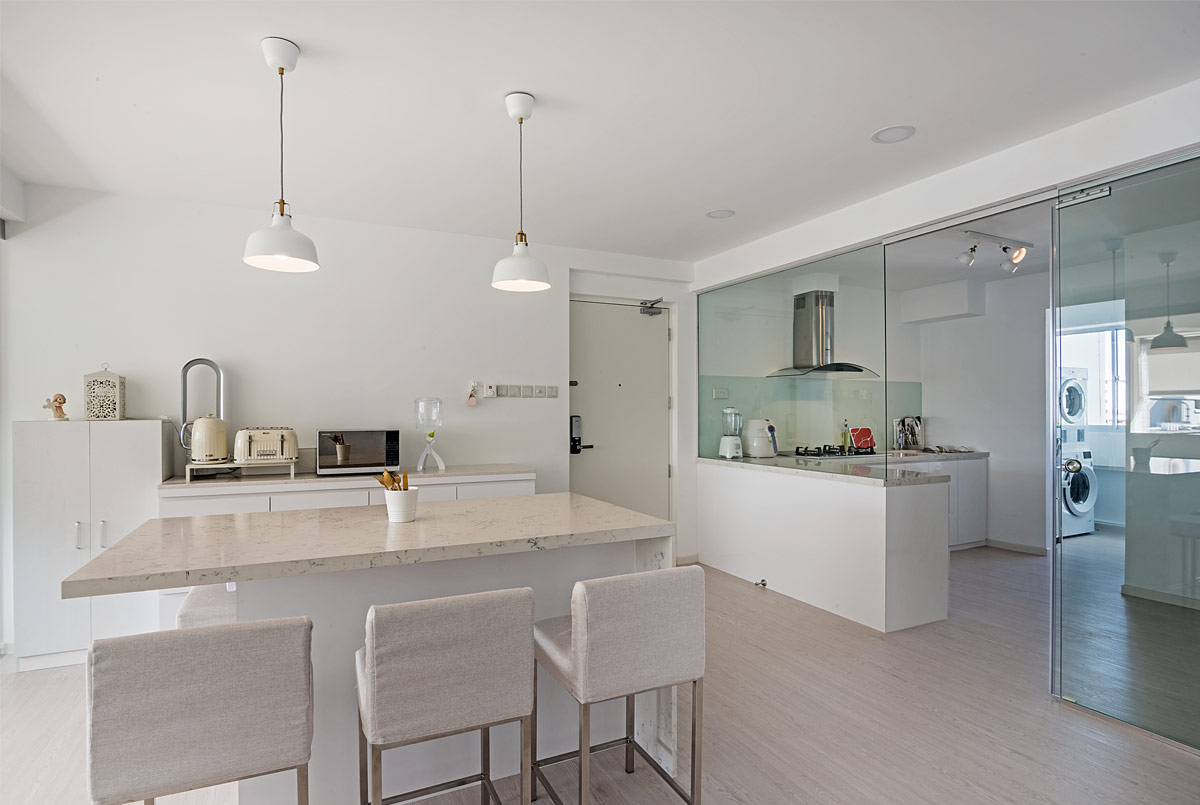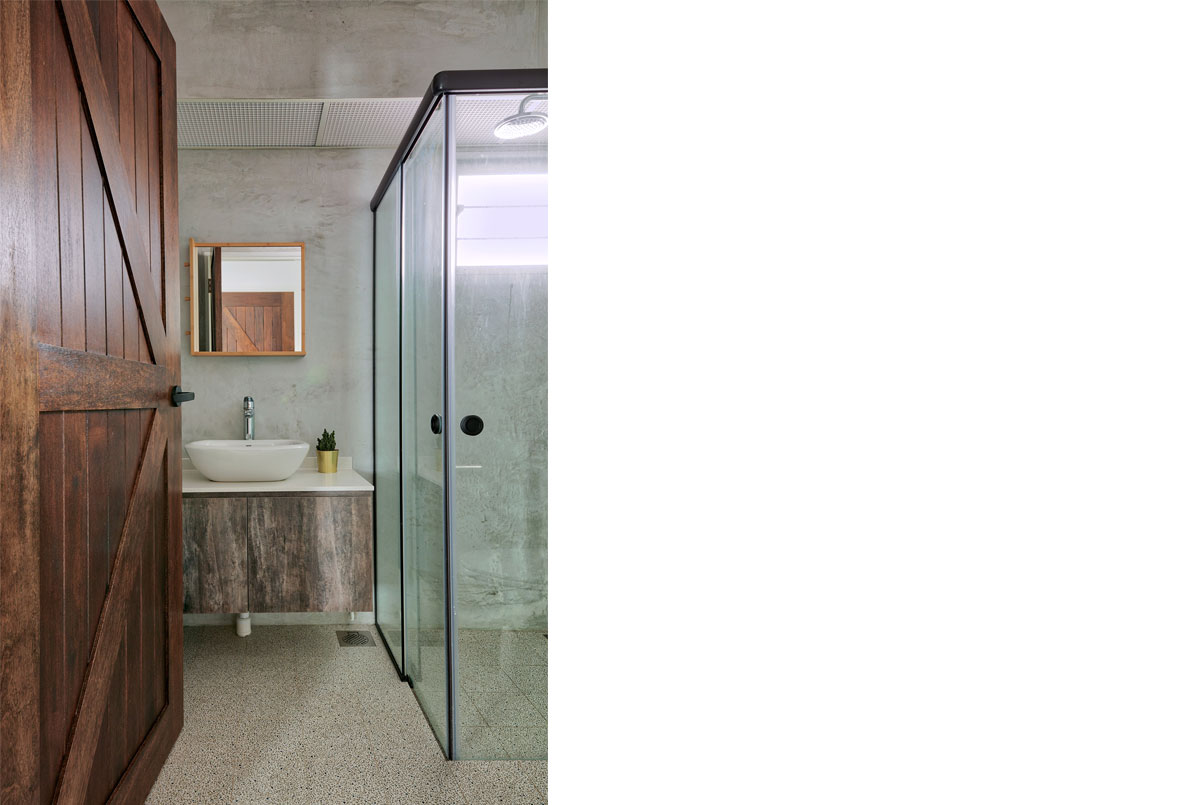Don’t know where to start when planning for your HDB renovation? You’ve landed on the right page. We help you establish a solid groundwork of HDB home renovations so that it progresses according to plan.
Timeframe
Time is of the essence in an overhaul no matter if it’s mini or major. Take charge of it to stay motivated throughout the long haul.

Image credit: 0932 Design Consultants
Do:
- Manage expectations right from the start – well before work commences. Some owners expect the entire process to complete within two months, or even earlier. While this might be plausible for a small-scale revamp, the timeline will not be the same for a complete overhaul of an obsolete resale flat.
- Clear communication is crucial in all aspects of the journey. Dedicate ample time to convey your requests and discuss any doubts with your designer in the initial planning stage. As he is the expert here, your interior practitioner will be able to advise you on a realistic timeline.
- Find out and try to understand the standard processes that take place within a renovation. The workflow usually starts with hacking, tiling and then electrical setup. This is followed by painting and carpentry, and finally, cleaning and touching up before the flat is handed back over to its rightful owners.
- Allow additional time for contingencies because unforeseen issues might arise despite diligent planning. This is particularly true with timeworn pads. Setting aside a buffer will thus help you stay within target.
Don’t:
- Don’t rush contractors to hasten their tasks. Rushing them might result in a sloppy outcome. The last thing you’d want is to experience major regret when hiccups happen and quality is compromised. In addition, the more you rush, the more tense you’ll be.
- Don’t forget to take into account holidays and peak periods when you’re setting the timeline. A couple of months before Chinese New Year is typically one of the busiest in the year. Although this cannot be avoided, it can be addressed with earlier planning.
- Try not to neglect regular checks. Diligently inspecting your flat’s progress helps you to stay on track – as you will be able to employ damage control in the event of a slip-up. Some interior designers are also conscientious in their efforts to keep you updated.
Budget
As one of the biggest financial investment you’ll make in life, you need to approach money matters with prudence to avoid anxiety – or worse, debt.

Image credit: DB Studio
Do:
- Clearly jot down a list of your needs and wants. This will address any expectations that you and your partner have concerning your abode’s facelift – and consequently, help the two of you set a more realistic budget.
- The bulk of your financial investment isn’t simply for the renovation aspect which entails construction works and interior design services. You’d also need to prepare additional cash for furniture, sanitary ware, gadgets, and home appliances.
- Do your legwork to get a sense of how much things cost. This allows you to prep and cater sufficient budget for the revamp as well as the furniture and fittings to outfit your place with. Go the extra mile by doing comparisons; you’d find out that different finishes or alternative brands can reap more savings. This way, you’d also get a gist of what to splurge and what to save on.
Don’t:
- Don’t stray away from your main plan. Changing concepts in the midst of renovations will cause problems and add to the expenses. Establish a firm foothold of your objectives and set your mind on the design that you yourself have approved. Always keep your perspective in mind when you start to feel disheartened.
Don’t compromise quality in an attempt to cut cost. Engaging external sources who charge less might seem like a nifty move, but ensure that they are able to assure quality. Shoddy work isn’t only unsightly, the re-do needed to remedy it will just incur more overheads - Big-ticket items cost a lot, so you don’t have to acquire all at a go. Items such as the sofa or the dining table can take a backseat first. Once you move in, you’ll gain a better awareness of your space. This will hint at the type, style or size of furniture pieces that will fit the family. You’ll also earn time to save a bit more for the subsequent purchase.
Hacking matters
Whether you’re taking down a single partition or removing the floor and wall finishes off a room, demolition work brings major repercussions. Do or don’t; it’s time to weigh your options wisely.

Image credit: DB Studio
Do:
- Consider to remove them if tiles are giving way in old resale flats. Don Lim of DB Studio points out that tiles laid over floors that are in a bad shape will cause problems in the long run. In this context, hacking is essential in building a new, stronger foundation for the house.
- Depending on the extent of demolition, remember that hacking generally adds a couple more weeks to the timeline. This shouldn’t be a problem if you’ve got time to spare.
- If the walls are cramping your style, no need to hold back. Just make sure you’ve consulted the experts and received the green light from the relevant authorities.
Don’t:
- Don’t hack if you’re concerned about the valuation of your home. Don Lim from DB Studio points out that the hacking of walls, in either BTO or resale apartments, may compromise its valuation if the residents decide to sell the house one day.
- The average cost of demolition, no matter if it’s the dismantling of walls or the hacking of floor surfaces, vary. Keep in mind that you are charged per square meter. Keep walls or finishes in place if budget is of a concern.
- Take note of the three-year restriction period for the walls and floors of the bathrooms in new BTO units. To avoid compromising the warranty, get around the issue by overlaying your preferred tiles over the existing floors – instead of hacking them away. What’s great is that this also helps to shorten the renovation timeline.
HDB-issued fixtures
HDB BTO flats come equipped with basic utility fixtures that are just as basic in looks and quality. The question is, should you keep them or not?

Image credit: Free Space Intent
Do:
- Stick to fixtures such as the WC and sink that come equipped with your lavatory if your mission is to scrimp and not splurge. To further cut corners on your bathroom re-do, consider retaining the wall and floor surfaces as well.
- Homeowners who are unfussy about how their space is styled and prefer to focus on practicality could also consider holding on to these HDB issued fixtures.
Don’t:
- With change, you are able to shape your suite’s aesthetics. Function wise, choosing a specific design will also help to cater to a concern or needs of the family. For instance, a faucet with a longer handle will be better suited for households with little ones or the elderly.
- If the bath space is subject to constant and heavy usage, durability should be a priority. Investing in quality fittings will also help save you the trouble of replacing fittings in case they get damaged shortly down the road.
This was adapted from an article originally written by Fidz Azmin published in the August 2018 issue of SquareRooms.



